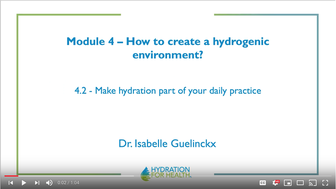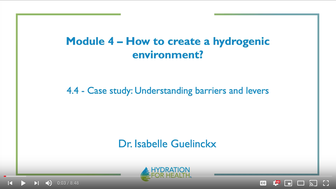4. How to create a hydrogenic environment?
Since 2010 our environment has been identified as being “obesogenic”. It is promoting weight gain: food is available everywhere and at all times and our environment is not promoting physical activity. What about a “hydrogenic” environment? Is our environment promoting a healthy hydration, being an adequate water intake?
As showed by the Liq.In7 cross sectional surveys, there are up to 70% of adults in some countries who drink less than the adequate intake of water from fluids, and the proportion of children and adolescents is even higher (Ferreira-Pêgo et al. 2015; Iglesia et al. 2015). Moreover in some countries drinking water is not always the main contributor to the mean fluid intake (Guelinckx et al. 2015). This talk aims to raise the awareness of the importance of assessing fluid intake, and how a “hydrogenic” environment can be created in a daily practise. Moreover, the possible barriers to increase water intake individuals might have, will be discussed.
References











